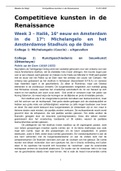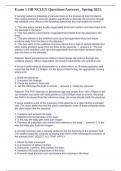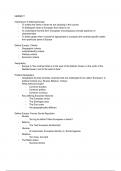Samenvatting
Samenvatting Intercultural Communication
- Instelling
- Hogeschool West-Vlaanderen (HoWest)
Volledige samenvatting van de lessen incl. powerpoints voor het vak 'Intercultural communication'. Er is geen cursus beschikbaar voor dit vak, waardoor dit een goede leidraad vormt voor het examen! Ik behaalde en 19/20 in combinatie met de groepsopdracht. Ook mijn medestudenten waren allemaal gesla...
[Meer zien]












